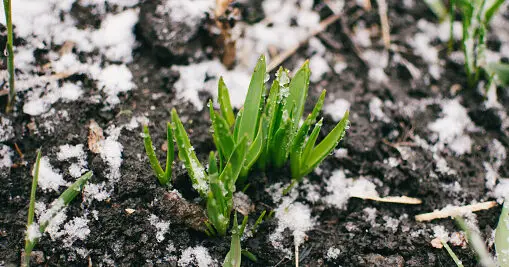Tulips are bulbous plants with solitary stems that are particularly appreciated to garnish most gardens in late winter and early spring.
There are more than 125 species and thousands of varieties in as many different colors and shapes.
Contents
Planting the tulip
In order to have beautiful tulips in spring, the planting of bulbs begins in early autumn until mid-December at the latest.
When to plant the tulips?
It all depends on the region in which you live. In cold regions, the ideal time to plant tulips is the first half of September. The soil is still warm and the bulbs have time to take root before winter.
Elsewhere, plant the tulips from the end of September. Do not plant the tulips too late in order to take advantage of their flowering in March. Late November seems a good time.
Where to plant the tulips?
Tulips easily find their place in a bed between perennials; they will be the first to flower. Perennials and other annuals will take over. So think of organizing a spreading of the blooms in the composition of your flower beds. Nothing is simpler than to insert a few tulip bulbs between your plants.
You can also plant your tulips in pots and planter boxes, which you will place near the window to enjoy the first flowers at the end of winter. If the container is big enough, you can mix the tulips with other spring bulbs and lay the bulbs in layers, respecting the planting depth for each one: the biggest ones at the bottom (horticultural tulips), the smallest ones on top (botanical tulips, but also crocus, muscaris…).
If the winter is severe, it is advisable to protect the pot from a winter veil.
Line the bottom of the pot with clay balls, or shards of earthen flower pots, to facilitate drainage: bulbs do not like stagnant humidity.
Planting tulip bulbs well
Make a hole 2 to 3 times the height of the tulip bulb to protect them from frost by spacing them at least 4 inches apart without moving them too far.
The direction of the bulb indicates that the tip should face upwards.
- Prefer a sunny place for a beautiful bloom.
- A well drained soil ensures a better development of your tulips.
- A handful of potting soil at the bottom of the hole when planting bulbs will significantly improve the growth and flowering of the tulips.
It is much prettier to create small lots of 10 to 50 bulbs than to plant them in groups of 3 or 4 around the garden.
Tulip in pot, plant them well
The tulip is a plant which adapts particularly well to the culture in pot.
- In the fall, plant 3-4 tulip bulbs per pot and cover with soil for about 4 inches.
- Leave your pots outside in winter, except in case of very harsh climate where they should be kept cool but protected from heavy frost.
- In spring, take the pots out on the terrace and water if it doesn’t rain.
Is it necessary to bring fertilizer when planting tulips?
When you plant your onions, it is not necessary to amend the soil with fertilizer. Indeed the bulb of the tulip is a stock of reserves allowing the whole plant to grow. These stocks are regenerated by the action of photosynthesis in spring as soon as the leaves come out of the soil.
This is why it is essential to let the leaves of your tulips develop even after flowering (wilted flowers). You will be able to cut them when they are completely dry.
Tulip care
Tulips require very little maintenance because, once planted, they should flower without touching them the following spring.
Fertilizer and watering
It is possible to improve the flowering by bringing a fertilizer for bulbs as soon as the first tulip leaves come out.
- Tulip fertilizer can be used both at planting and during the growth phase.
At the time the tulips come out, the rainfall is normally sufficient to avoid having to water.
In pots, the tulips should be watered when the soil is dry on the surface.
Tulip after flowering
We sometimes underestimate the importance of this period because it is when it starts to wither that it starts to build up its reserves for the next flowering.
Faded tulip
It is necessary to wait until they are well faded because it is at this time that they constitute their reserves for the following year.
- Cut the leaves and stems only when they are yellow and especially not before.
- If you remove the foliage just after flowering, they may not bloom again the following spring.
- You can nevertheless cut the faded flower for more estheticism.
Tulip in pot after flowering
- At the end of flowering, wait until the leaves turn yellow before cutting the foliage.
- Take out the bulbs until autumn in a cool and dry place before replanting or leaving them in the pot.
Summary
Flagship flower of spring, the tulip colors gardens, terraces, balconies and interiors with its bright or subtle hues. The tulips we know are descended from wild ancestors from Europe, particularly from the Mediterranean basin to Asia Minor. Cultivated for centuries, tulips have been and still are the subject of ever more colorful and flowery selections.








